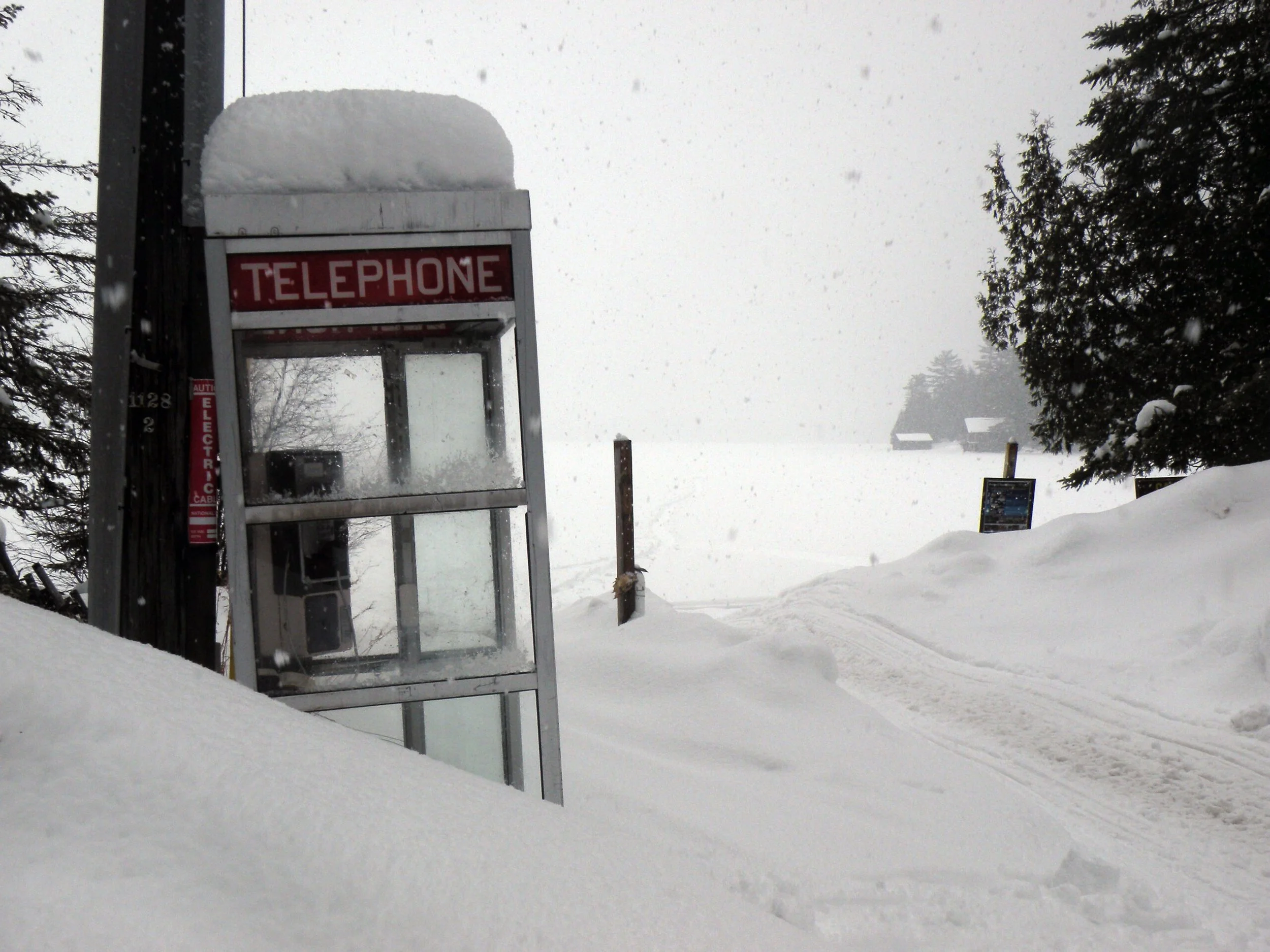EXPLORE! Russian Lake
The most popular hiking trailheads tend to be the ones where you can drive up to the beginning, park your car, lace up your boots, and set off directly into the woods. They are the most obvious choices and the easiest to find. But what if you had to travel a little bit of distance to get from the parking area to the start of the trail? What if a large lake stood between you and the trail you wanted to hike? That is exactly the situation at Big Moose in the western Adirondacks.
There are two good times of the year to hike such a trail. One is during the boating season, when you could paddle across said lake to access the remote trailhead. But the second best time is in the dead of winter, when the lake is frozen and serves as a blank canvas to be etched by the expressive lines of a set of ski or snowshoe tracks.
For this winter ski/snowshoe adventure, the starting point I’m going to recommend is not a trailhead per se but a public canoe launch, where the road ends and the lake begins. For half the year you’d have to put your hiking boots in your canoe or kayak, and then paddle across Big Moose Lake to the distant shores. That is a perfectly fun thing to do, in the right season. But people tend to forget that the lake is no barrier in the winter, and of the trails that radiate out from the far end of the lake, Russian Lake is the best suited for a winter expedition.
Of course, there are inherent risks involved in any ice crossing; this trek cannot be accomplished too early or too late in the winter season. Even in mid-February, if the weather is too unseasonably warm or the ice looks too soft, then don’t do it. But when the ice is solid, set a course northeast and enjoy a memorable outing!
Getting There
From NY 28 in Eagle Bay, turn northwest onto Big Moose Road. Drive slowly, as the road is notoriously twisty, and in the winter it doubles as a snowmobile trail. At 3.9 miles bear right onto Higby Road, which rises over a hill and descends through a wetland on the other side. There is a fork near the end where a right turn leads to the water access site managed jointly by the town and the Big Moose Lake Property Owners Association. (Yes, that is a functioning public phone booth off to the left.)
Big Moose Lake Access
The Trail
From the water access site at the end of Higby Road, keep right and follow the southern shoreline northeast. In good conditions this is a pleasant trek, and while I might personally prefer a less developed backdrop for my wilderness wanderings, Big Moose Lake is hardly an eyesore. Dozens of tidy camps dot the shoreline all the way into East Bay, and in my experience the snowmobile traffic on the lake tends to be light. Ridges and small mountains surround Big Moose, though few of them have names.
The trek across the ice is a minimum of 1.3 miles. As you enter East Bay, you’ll notice an absence of camps on its north shore. State land begins there, so you’ll now want to cross the bay to find the trailhead. The trail to Russian Lake begins well into the bay, marked by signs and a dock (though, admittedly, the latter might be hard to spot in the snow). However, you may wish to bypass the official trailhead and continue a few hundred feet eastward to the second place where the trail meets the shore in a cedar grove, entering the woods here and bypassing a short-but-rugged section of trail.
The hiking trail to Russian Lake is just 0.8 mile long, passing through the old growth forests for which the Pigeon Lake Wilderness is famous, on a beeline to Russian Lake. I’ve never skied the trail, but I cannot think of any reason not to do so—other than the fact that few people come here in winter, and thus it is unlikely you’ll find a good set of tracks to follow. Snowshoes have no problem, and about 20 minutes from East Bay you arrive at the lean-to.
Russian Lake Lean-to
The shelter stands on an open point, making it highly scenic though exposed to a northerly breeze. In good weather, it would make an ideal winter campsite: there is plenty of sunshine hitting the campsite, and it would not be difficult to haul a pulk sled full of gear across the lake and up the trail.
Even for just a day trip, this is well worth the effort. Other trails in the Big Moose region seem to receive regular winter usage, but not this one. I think the idea of parking at a boat launch in winter and trekking across a frozen lake are two ideas that simply do not occur to many people. But in the right conditions, this is a great place to enjoy the winter season.
Russian Lake Trail Map



